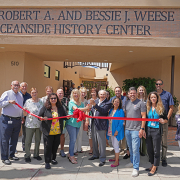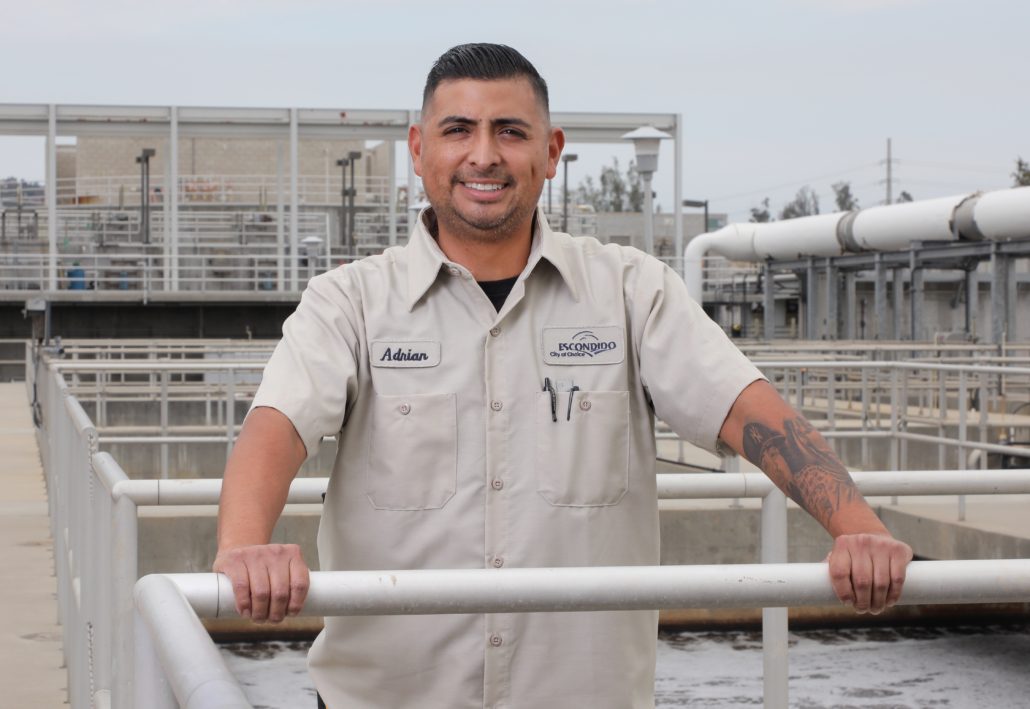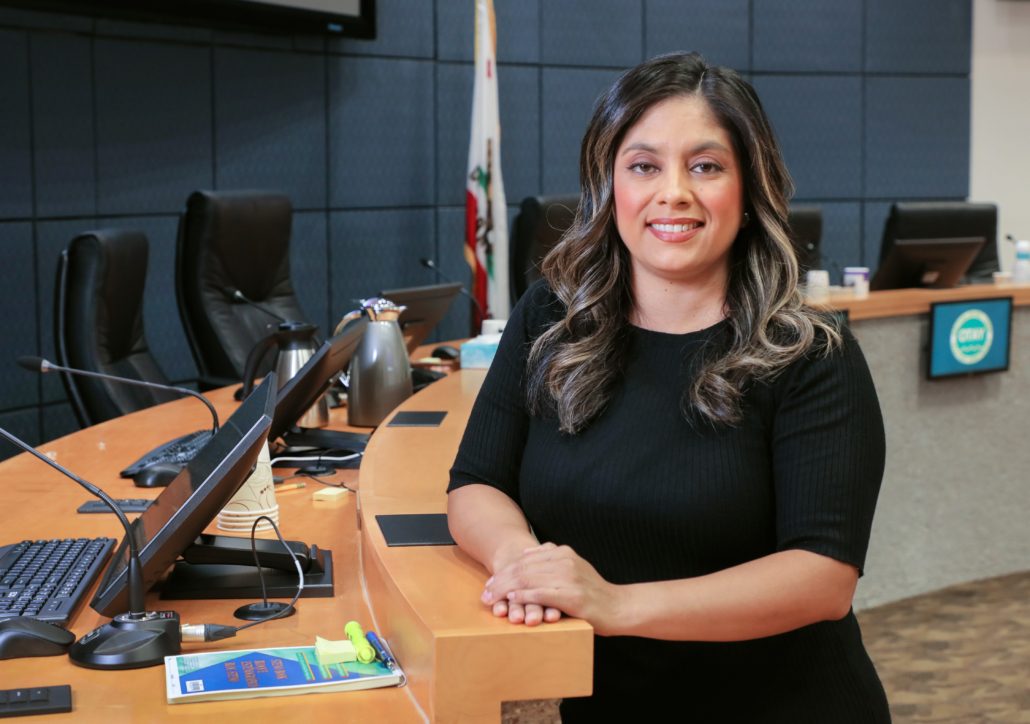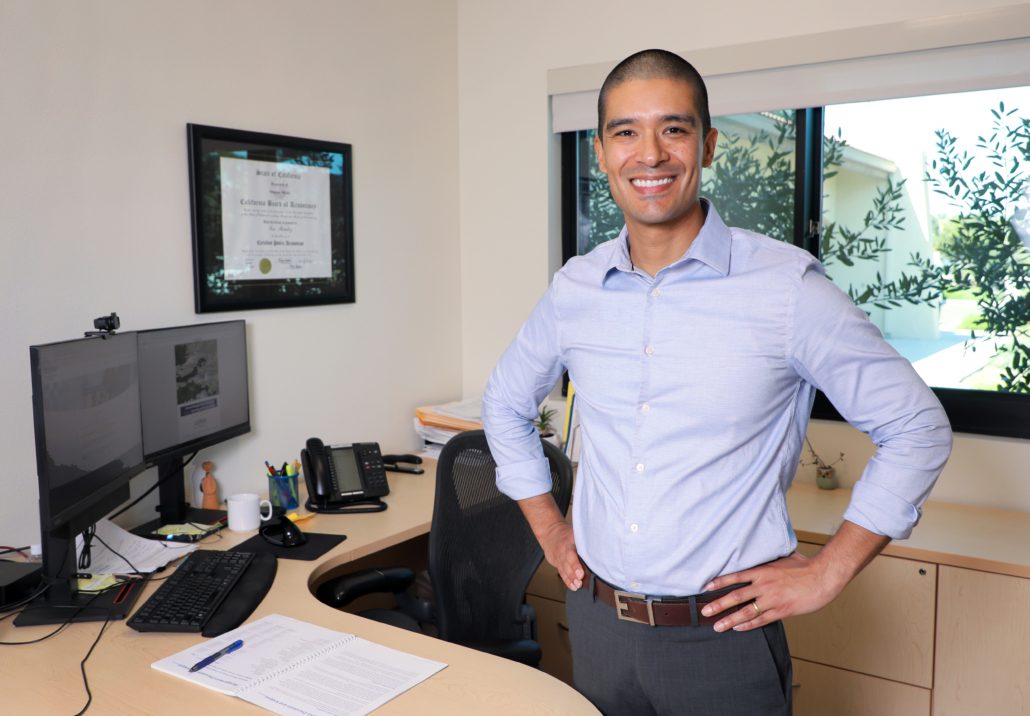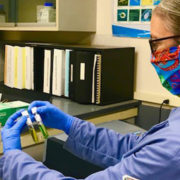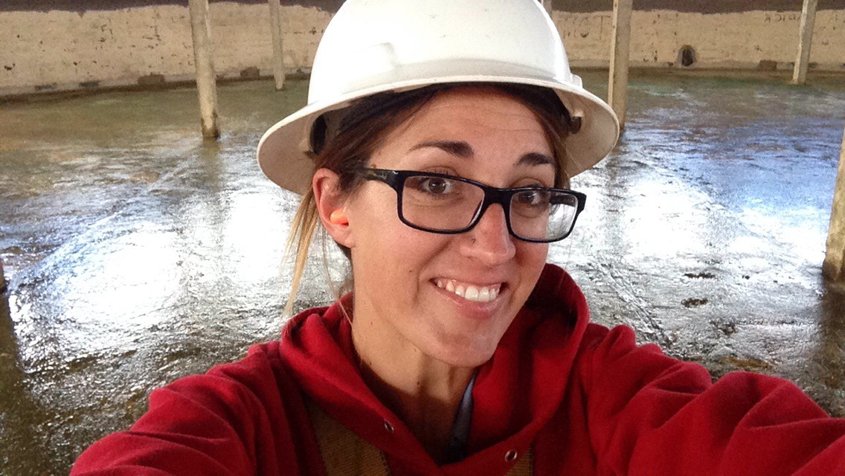Oceanside History Center’s New Home Named After Water Pioneer
The Oceanside Historical Society opened the Weese Oceanside History Center at its new permanent home with a ribbon-cutting on August 29. It is now located at 510 Civic Center Drive next to The Star Theatre.
The Weese Oceanside History Center is named in honor of Robert and Bessie Weese. Robert Weese dedicated more than 40 years of service to the City of Oceanside Water Department and to the San Diego region as a San Diego County Water Authority board member. He was known as “Mr. Water” for his expertise.
Weese Honored For 40 Years of Water Industry Service
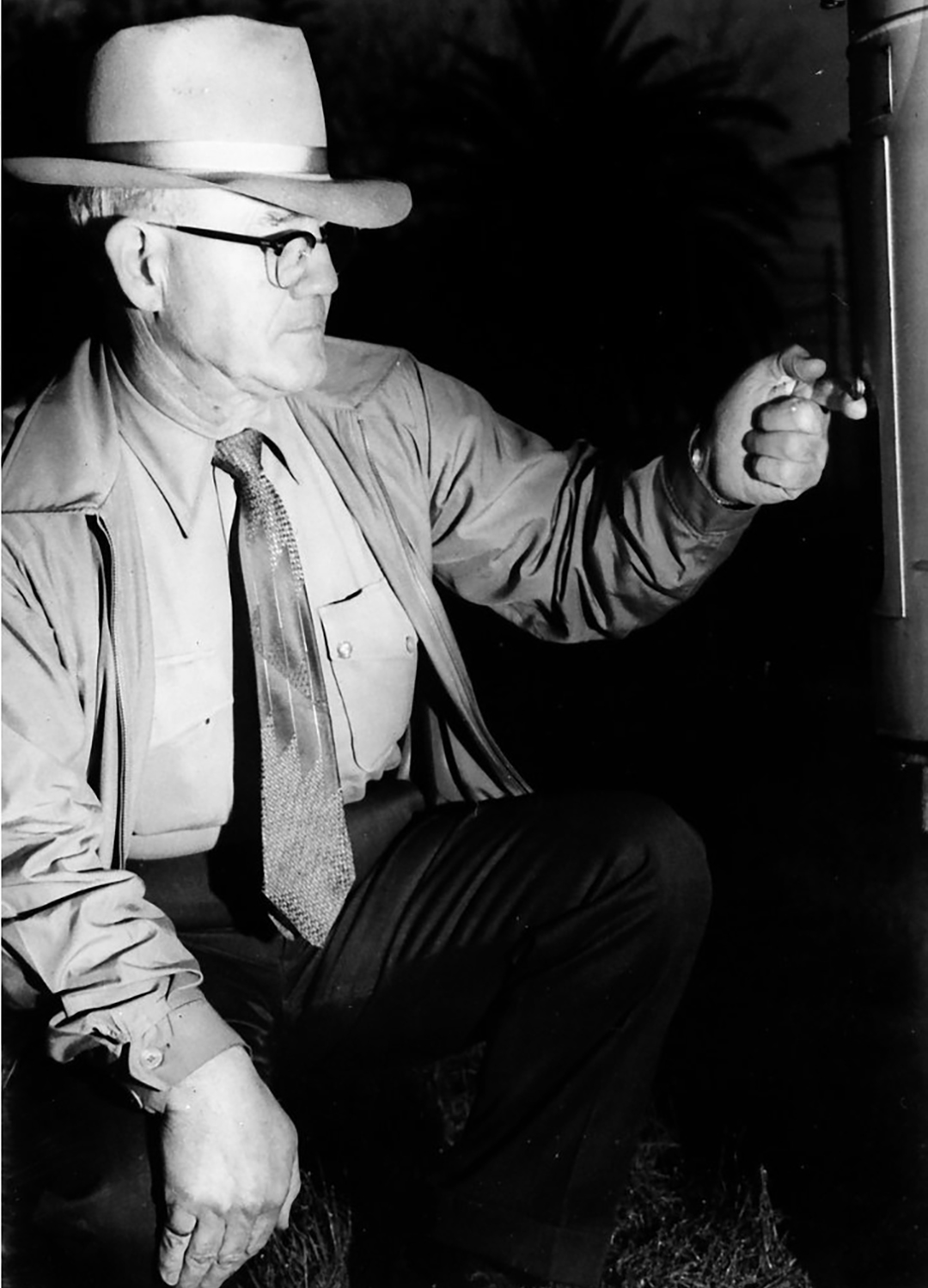
Robert A. Weese worked for the City of Oceanside water department for 40 years. Photo: City of Oceanside
Weese, a native of Ontario, Canada, came to the U.S. and became a naturalized citizen after serving in the Canadian Army as a teenager. He drove an ambulance in England during World War I.
He joined the U.S. Navy in 1924 and was stationed on the USS Arizona based in San Diego. After meeting and marrying his wife Bessie, he was discharged from the Navy and went to work for the Oceanside Water Department as a meter reader, beginning a life of service in the water industry.
Weese gained a firsthand knowledge of the water system by reading and repairing every water meter in Oceanside, and through weekly checks of the city’s wells and the water table. In 1935, the federal Works Progress Administration (WPA) built a new pumping station and reservoir at Buddy Todd Park, where Weese would chlorinate the water.
In 1938, Weese was appointed Oceanside’s Water Superintendent, a position he held until his retirement in 1968.
Weese had the foresight to divert sewer effluent away from the Pacific Ocean into Whelan Lake. He also proposed an underground barrier at the mouth of the San Luis Rey River as a means of holding back the ocean during periods when the water table was pumped below sea level.
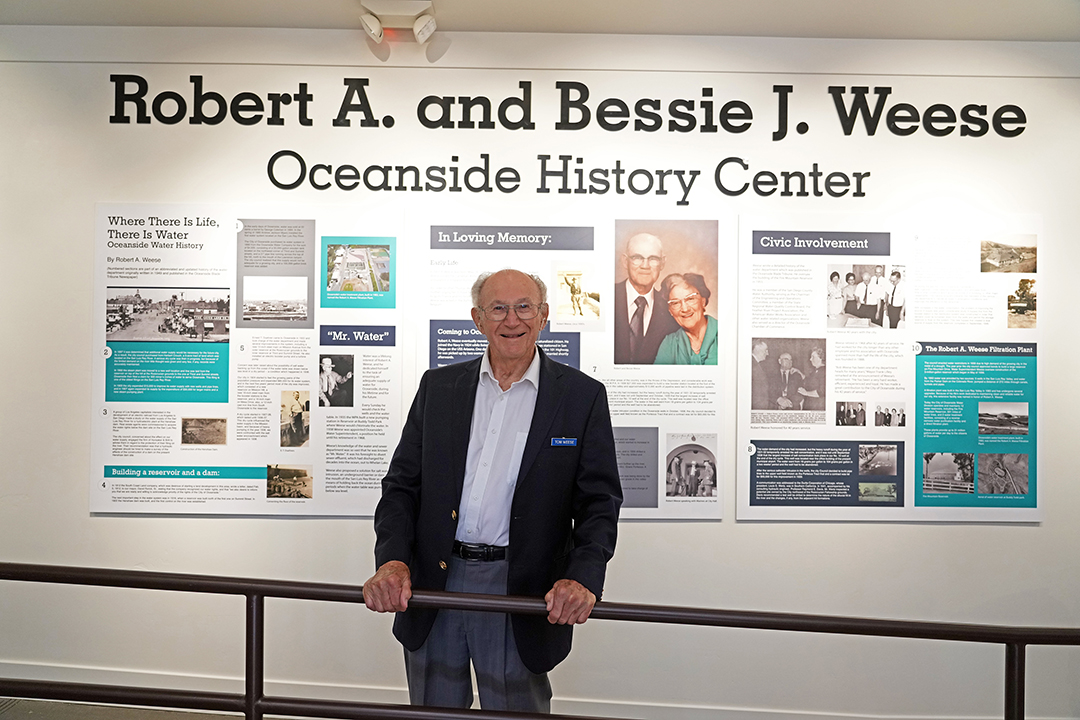
Tom Weese, son of Robert and Bessie Weese, in front of an exhibit honoring his parents at the Weese Oceanside History Center. Photo: Zach Cordner/The Osider.
Weese wrote a history of the water department, which was published in the Oceanside Blade Tribune newspaper. He oversaw the building of the Fire Mountain Reservoir in 1955.
In addition to serving as chairman of the Water Authority’s Engineering and Operations Committee, Weese was a member of the State Regional Water Quality Control Board, the Feather River Project Association, the American Water Works Association, and other water-related organizations. Weese also served as a director of the Oceanside Chamber of Commerce.
Oceanside’s water treatment plant, built in 1983, was named the Robert A. Weese Filtration Plant.
New Exhibit Space Includes Weese Papers
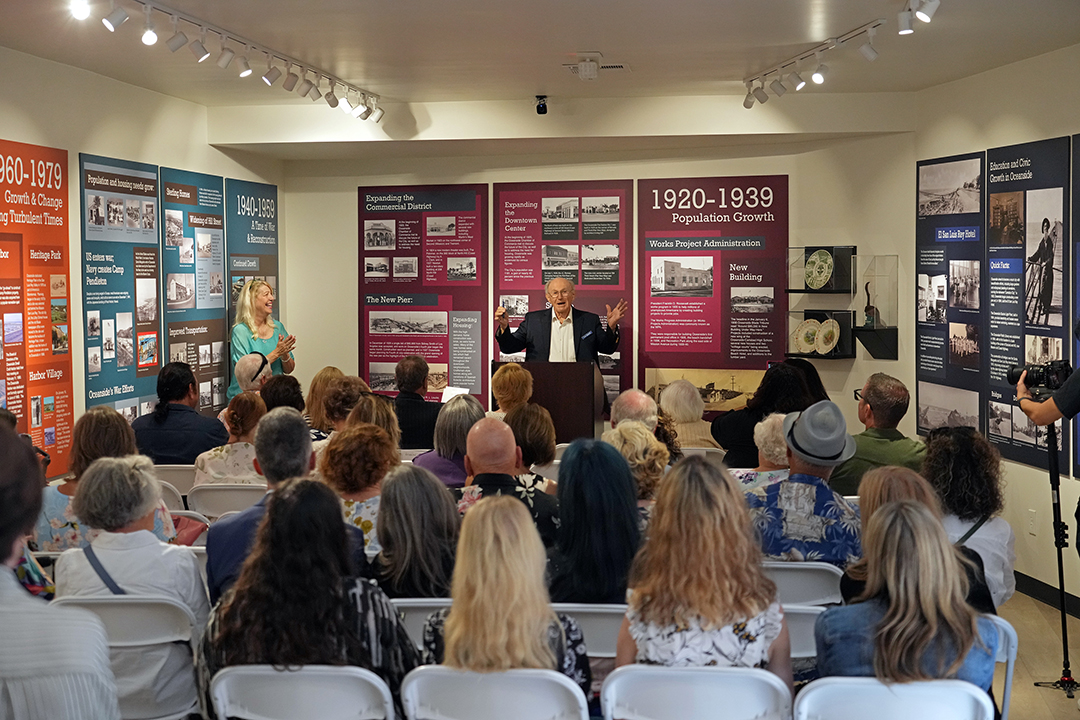
Tom Weese, son of Robert and Bessie Weese, speaks at the August 29 ribbon-cutting event for the relocated Weese Oceanside History Center as historian Kristi Hawthorne looks on. Photo: Zach Cordner/The Osider.
The new location of the Weese Oceanside History Center has more than 3,000 square feet of exhibits spanning a century from the 1880s to the 1980s. Among the exhibits is a collection of Weese’s personal and professional papers, donated by his son Thomas Weese in 2022.
Hours are Monday through Friday, 10 a.m. to 2 p.m. Admission to the history center is free.

